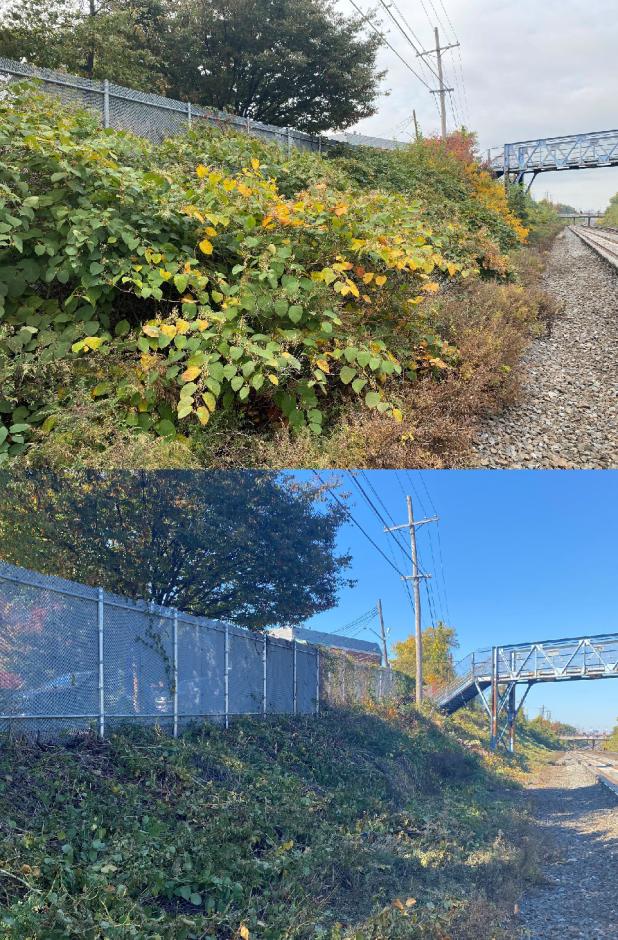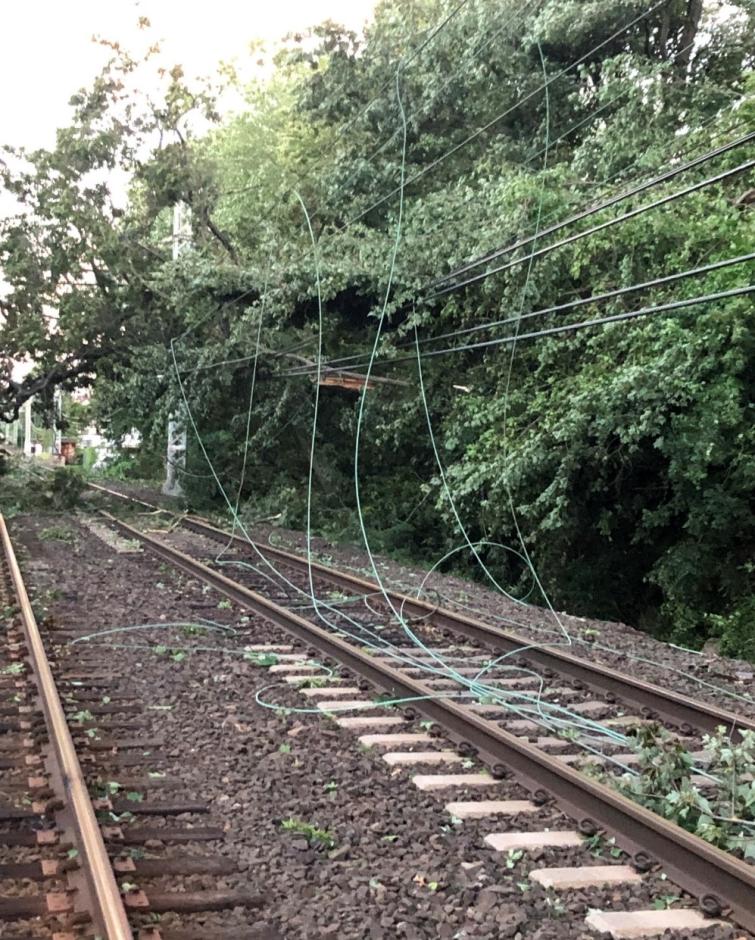The Metropolitan Transportation Authority’s (MTA) railroads (Metro North Railroad and Long Island Rail Road) have vegetation management plans designed to ensure safe movement of trains and protect employees and the public. The measures that we undertake to perform these duties are done primarily as a form of preventative maintenance, which is a common practice for the MTA.
This preventative maintenance helps:
- Prevent service disruptions and damage from trees falling on overhead wires or across our tracks.
- Ensure proper line of sight that is free of visual obstacles for train engineers so they can safely operate trains.
- Allow for the proper inspection of railroad infrastructure.
- Prevent fires along the right of way that otherwise can be caused by passing trains (third rail) or from track maintenance.
- Remove tripping hazards for employees who work along the right of way.
- Prevent tree roots from damaging underground signal and communications equipment.
The MTA is required to adhere to an extensive body of regulations directed by various state and federal agencies. The most comprehensive body of safety regulations is overseen by the Federal Railroad Administration (“FRA”), the agency that has primary regulatory authority over rail safety in the United States. In addition, the Federal Transit Administration (“FTA”) administers a national transit safety program and program compliance oversight process to advance safe, reliable, and equitable transit service throughout the United States.
Critical safety regulations require that MTA Railroads maintain their rights-of-way and regularly inspect track, structures, and various railroad components to protect the safety of rail operations, the safety of railroad employees and the safety of the public. The MTA follows a carefully defined process under which we inspect our infrastructure in order to discover and repair defects that could lead to derailments or other types of incidents that would be harmful to the railroad and its employees, the public or to the environment.
Vegetation management plans are designed to ensure the MTA is able to maintain the integrity of its track, structures and right-of-way by facilitating the integral inspections required in accordance with state and federal law and enables the MTA to detect and repair defects before they result in accidents.
 Vegetation management in Elmhurst, Queens, along the Long Island Rail Road's right-of-way, helps keep trains running safely and reliably.
Vegetation management in Elmhurst, Queens, along the Long Island Rail Road's right-of-way, helps keep trains running safely and reliably.
The MTA railroads Vegetation Management plans contain a “good neighbor” policy, and it is our goal to be a “good neighbor”. The MTA will make reasonable efforts to provide for meaningful prior notice, when reasonably practicable, of any significant vegetation management activities that may impact neighboring properties or stakeholders in the communities affected by such activities. Such notice will be coordinated through Government & Community Relations (“GCR”) and may vary by circumstance or nature of the work.

Generally, for cyclical vegetation management activities, MNR and LIRR Maintenance of Way Departments will provide GCR with a 2-week look-ahead schedule indicating the branch and milepost segment that vegetation management activities are planned to be performed. For reactive/emergency efforts, notice will be provided if reasonably practicable, however, it is recognized that this may not always be possible given the operational issues downed trees or other issues associated with vegetation may be causing.
Whenever there is scheduled vegetation management performed, GCR will make every effort to provide meaningful notice to elected officials, neighbors along the right-of-way, and community groups who represent the affected area. This will usually take the form of an email notification with a rough summary of the work to be performed, the timeframe it will require and the area to be cleared. When vegetation management has to occur along portions of the right-of-way, MTA may send “dear neighbor” letters providing notice of upcoming work.
Elected officials and community groups in this case being both state and local officials and groups, including but not limited to:
- State Senator’s office.
- State Assembly Member’s office.
- New York City Council Member’s office.
- Community Board office.
- Village Mayor/Clerk’s office.
- Town Supervisor and/or Council Member.
- County Legislator.
- Any relevant civic associations.